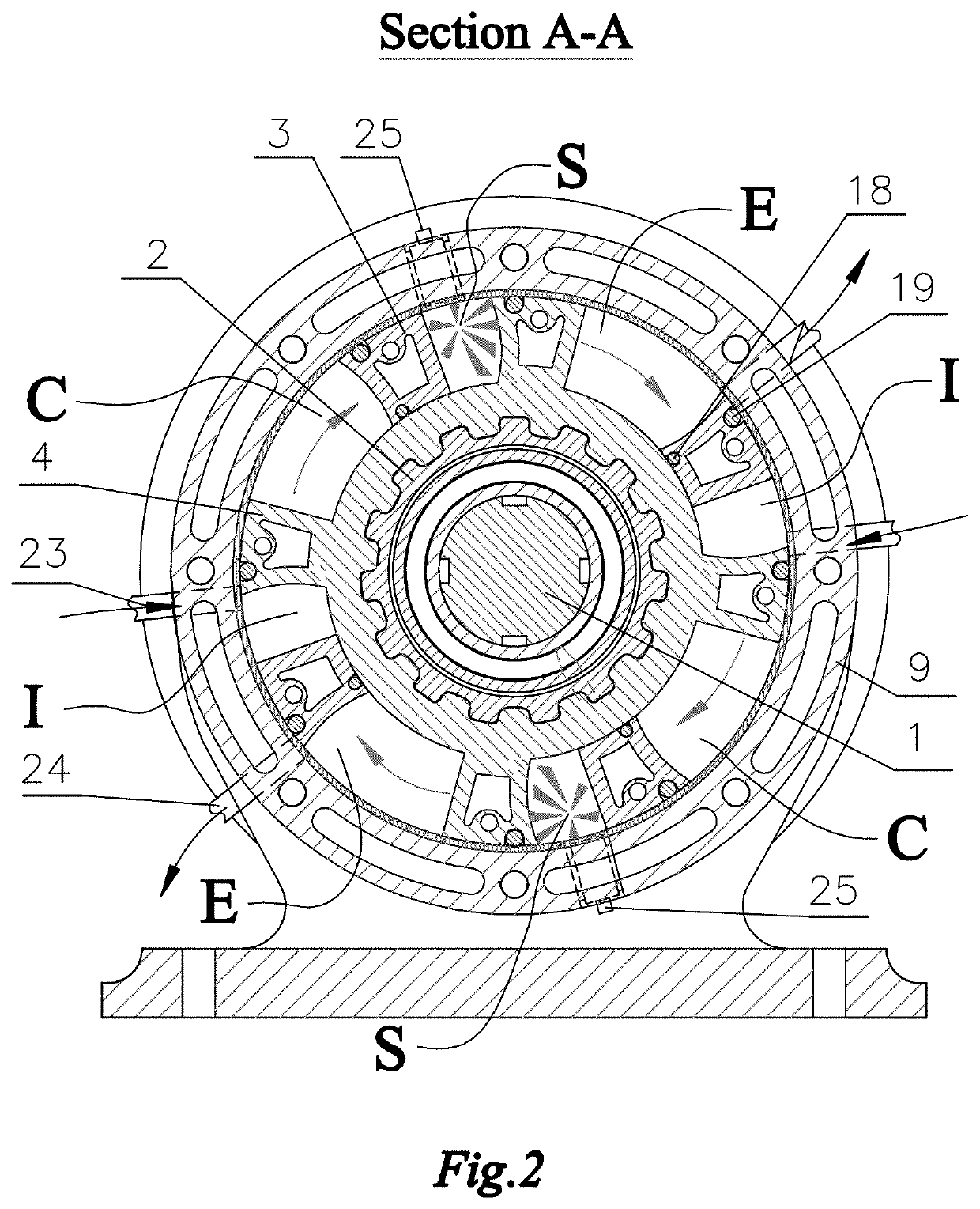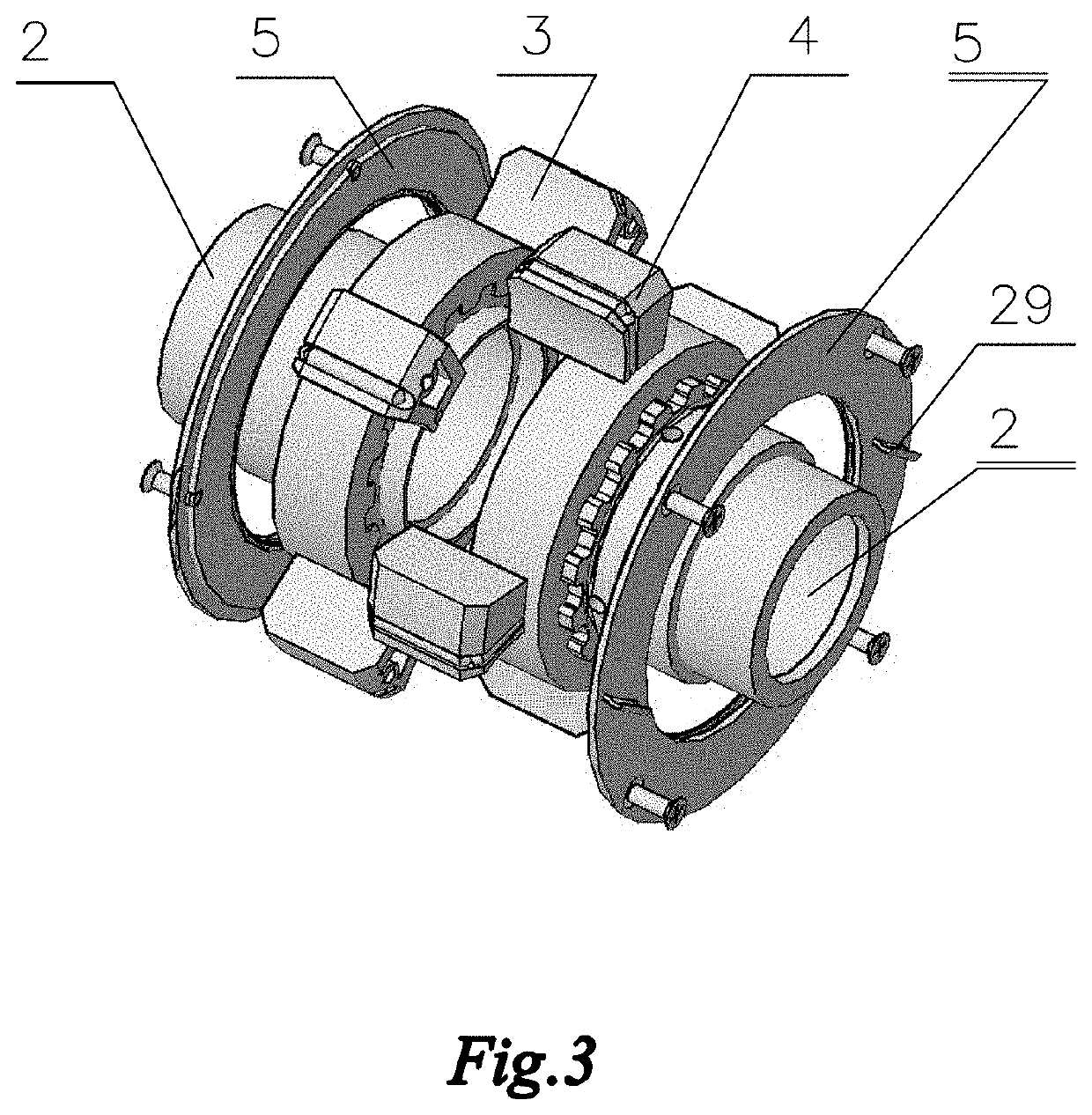Rotary vane internal combustion engine
a technology of internal combustion engine and rotary vane, which is applied in the direction of combustion engine, arcuate-engagement engine, machine/engine, etc., can solve the problems of complicated mechanism for coordinating the movement of the rotor, increase the temperature and wear of the surface so as to facilitate the service, and increase the reliability of the rotary vane internal combustion engin
- Summary
- Abstract
- Description
- Claims
- Application Information
AI Technical Summary
Benefits of technology
Problems solved by technology
Method used
Image
Examples
Embodiment Construction
[0061]The present invention is one embodiment of a rotary vane internal combustion engine where torque on the shaft is produced due to alternating interaction of the rotors within. The rotors placed in housing between two cooling chambers, around which cooling fluid is circulated, have conical and cylindrical graphite seals to eliminate friction between the work surfaces. This invention relates to improvement of rotary vane internal combustion engine and will be described with reference to the following drawings.
[0062]As shown on the drawing FIG. 1, rotary vane internal combustion engine related to one embodiment of the present invention comprising a housing 9, inside which set a shaft 1, which interacts with rotors 3 and 4 through one-way overrunning clutches 8, which are rigidly joined with rotors 3 and 4 by adapters 2. The one side of each rotor is rigidly closed by flanges 5, which are formed with caps 6 the chambers for circulation the cooling fluid to use mounted on flanges 5 ...
PUM
 Login to View More
Login to View More Abstract
Description
Claims
Application Information
 Login to View More
Login to View More - R&D
- Intellectual Property
- Life Sciences
- Materials
- Tech Scout
- Unparalleled Data Quality
- Higher Quality Content
- 60% Fewer Hallucinations
Browse by: Latest US Patents, China's latest patents, Technical Efficacy Thesaurus, Application Domain, Technology Topic, Popular Technical Reports.
© 2025 PatSnap. All rights reserved.Legal|Privacy policy|Modern Slavery Act Transparency Statement|Sitemap|About US| Contact US: help@patsnap.com



